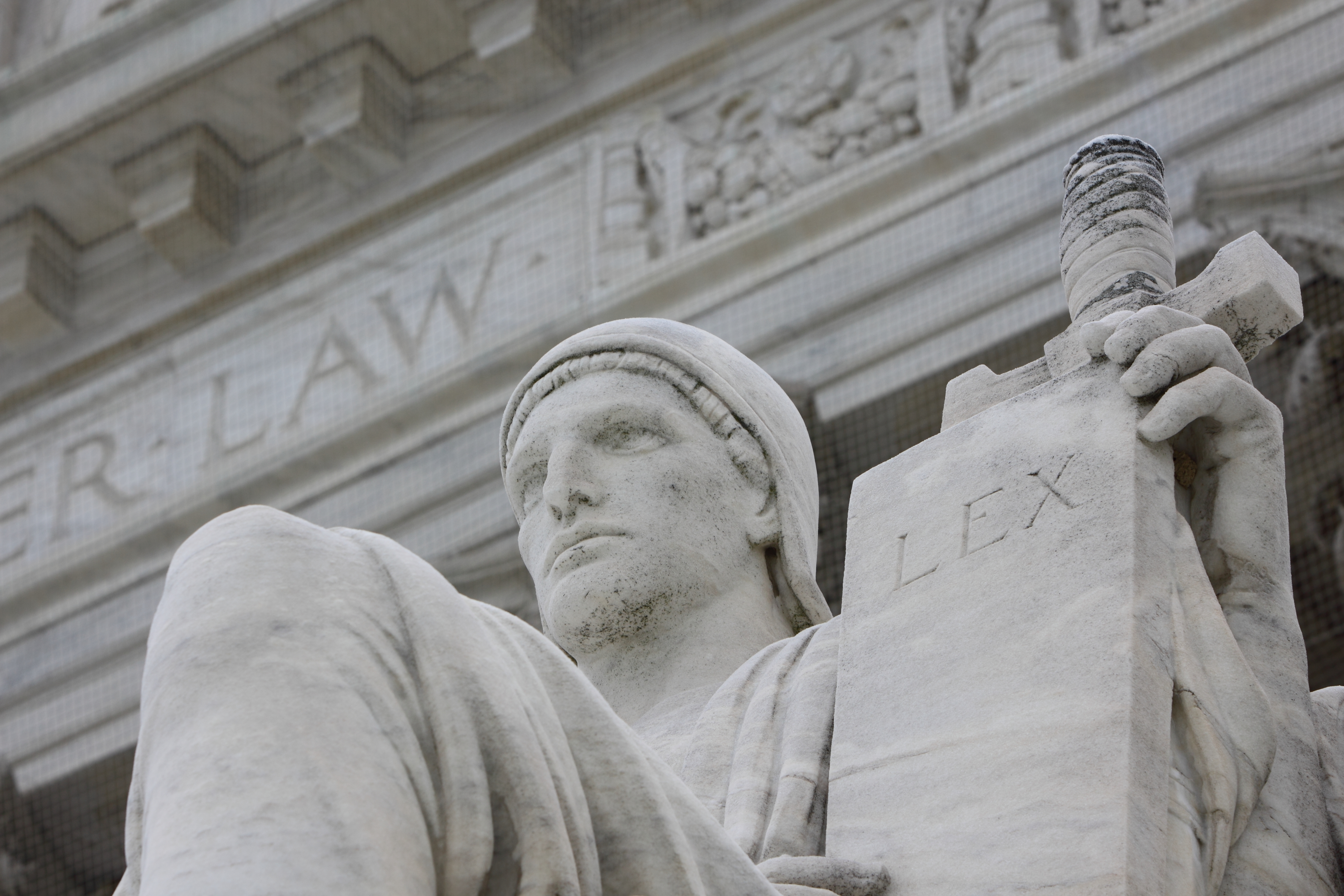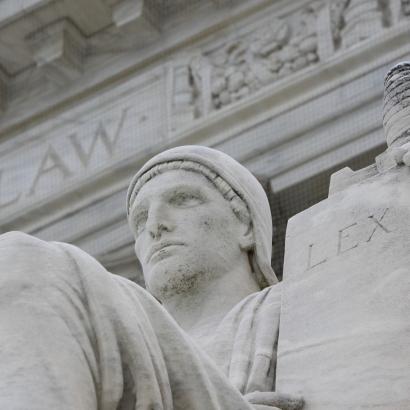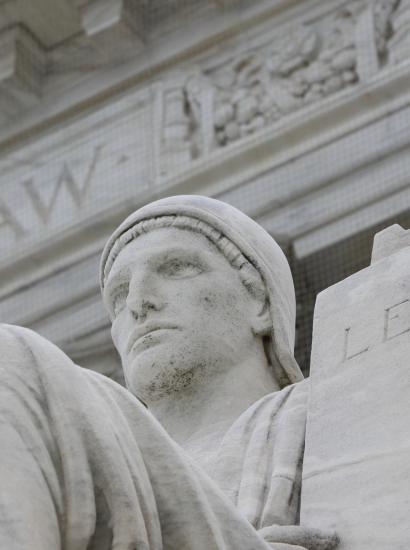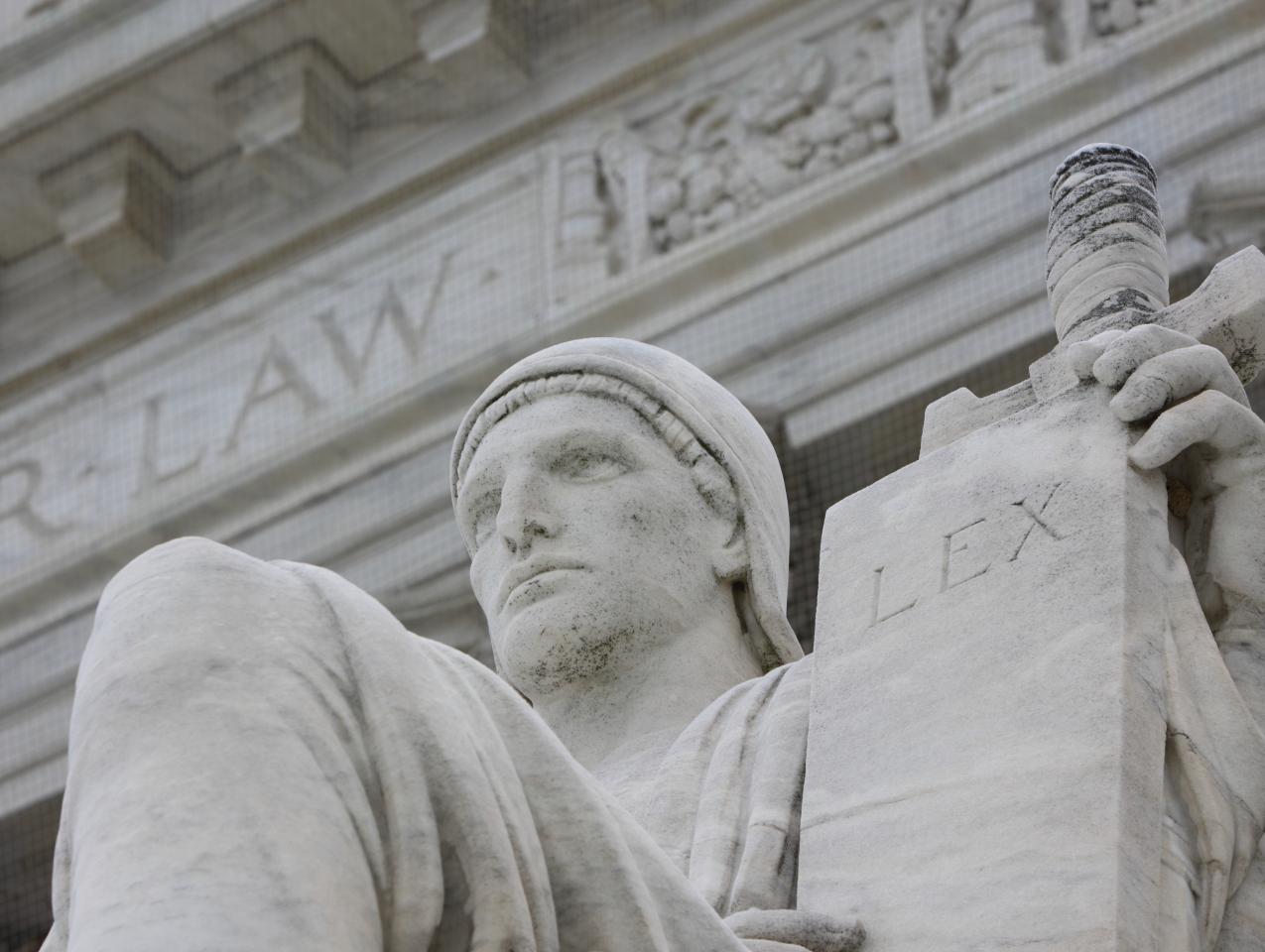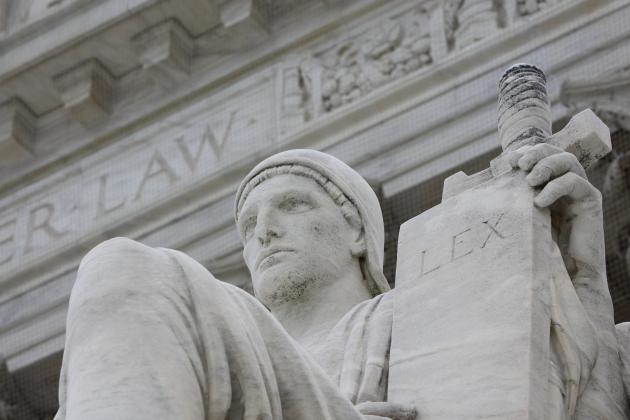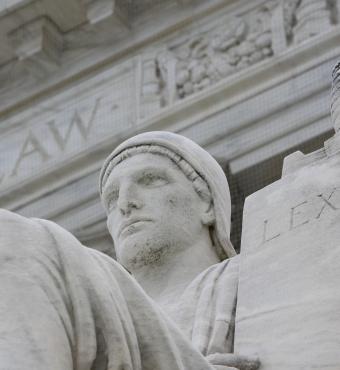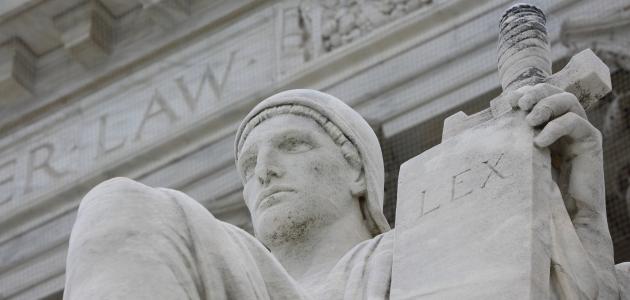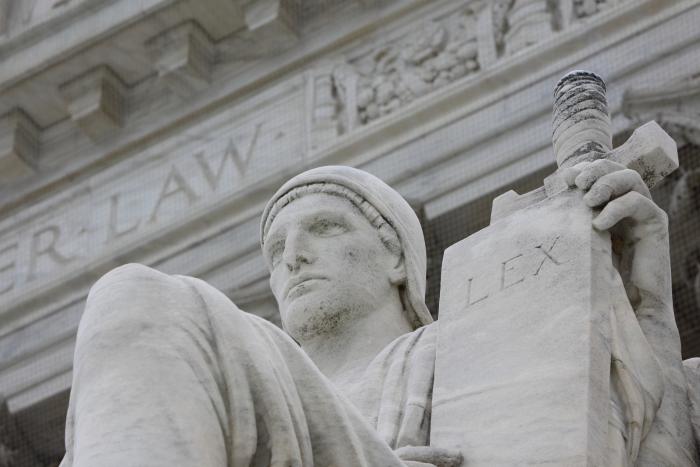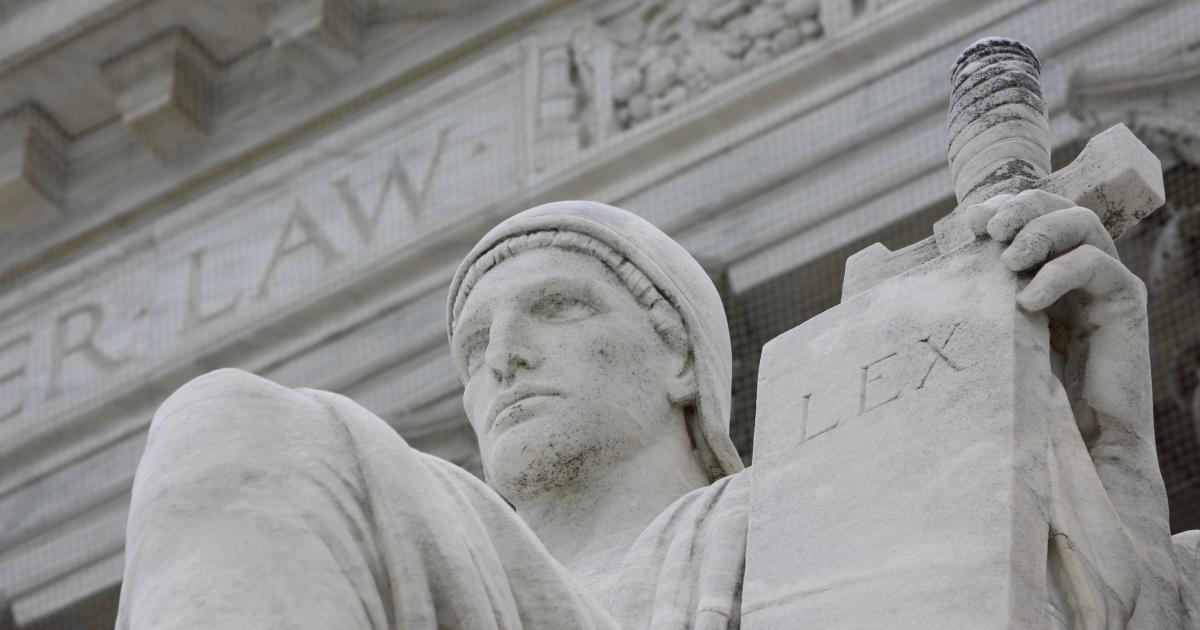- Law & Policy
Affirmative action is a tough and divisive issue. That’s the takeaway from the Supreme Court case of Schuette v. BAMN. At issue in Schuette was an amendment to the Michigan constitution, adopted as Proposition 2 by popular referendum in 2006. The vote was 58 to 42 percent in favor. It states that universities in Michigan “shall not discriminate against, or grant preferential treatment to, any individual or group on the basis of race, sex, color, ethnicity, or national origin.” The case raises an important question: What is the proper political and/or constitutional response to affirmative action? Put another way, who has the final say on affirmative action in public institutions, the people or the courts?
One Clause, Three Interpretations
The issue teed up in Schuette was whether this explicit guarantee of racial neutrality counted as a violation of the Fourteenth Amendment to the United States Constitution, which dictates that no person be denied Equal Protection of the Laws. The Supreme Court did not come to any definite resolution on the matter. Justice Kennedy writing for a plurality of himself, Chief Justice Roberts, and Justice Alito took the measured view that the people by constitutional referendum could reverse a previous decision made by the Board of Regents of the University of Michigan to allow the limited use of race-based preferences upheld in Grutter v. Bollingerin 2003, a case whose validity they did not revisit. A solo decision by Justice Breyer offered a more guarded defense of the same position.

The far more aggressive position of Justices Scalia and Thomas was that the referendum only did what was constitutionally required under the Equal Protection Clause. “Does the Equal Protection Clause of the Fourteenth Amendment forbid what its text plainly requires?” So asks Justice Scalia. In his view, Proposition 2 was right for the reasons that Grutter was wrong.
At the opposite end of the spectrum, the impassioned dissent of Justice Sotomayor, joined by Justice Ginsburg, condemned in no uncertain terms the color-blind standard of the Michigan amendment as “the last chapter of discrimination” because it took the control of “race sensitive” decisions—a euphemism for affirmative action—away from the political branches of the Michigan legislature, which set up separate governing bodies for each public university. Proposition 2 took this issue out of their hands constitutionally while leaving all other issues, such as legacy admissions, to the governing boards subject to normal legislative oversight. To Justice Scalia it was “doubly shameful to equate ‘the majority’, behind §26 [the amendment] with ‘the majority’ responsible for Jim Crow.”
The Political Process Puzzle
What makes this constitutional tussle so difficult is the tangled set of cases from the 1960s that first grappled with the complex interaction between the Equal Protection Clause and state political processes. These cases have set a complicated precedent for the current case. The first of these cases was the 1967 decision in Reitman v. Mulkey in which the Supreme Court struck down a state-wide California provision providing that no state or local government could deny or abridge the “absolute discretion” of any property owner to sell or lease, or not sell or lease, his property to whom he saw fit. That provision, passed by referendum, sought to overturn an antidiscrimination or “fair-housing” ordinance that prohibited owners from refusing to sell or rent to persons solely on account of their race. It only entrenched the common law right of ownership to pick potential buyers and renters.
The oddity of Mulkey is that under the Equal Protection Clause, nothing prevented California from repealing its civil rights law by contrary legislation. The result of the California referendum would not have been vulnerable to constitutional attack if that ordinance had never been enacted. Why then strike down the referendum when the people at large wish to correct a decision by their delegated representatives? That process is neither new nor novel. There is no reason why it cannot be used here.
In Mulkey, Justice White held that the referendum failed constitutionally because the state legislature had “authorized” and “encouraged” forms of racial discrimination. In 1967, when I was a law student, I thought Mulkey was wrong, and I still think that it is wrong today. The basic proposition that each person in a competitive market can choose his or her trading parties does not authorize that person to enter into or refrain from certain choices. Nor does it encourage him to do so. It just leaves those choices to individual property owners. The referendum does not, expressly or by implication, limit the privilege of choosing a buyer or a tenant so that only white persons may exclude black persons. It authorizes any person to make those decisions with respect to any other person. It permits, for example, explicit racial quotas that enlightened landlords might use to prevent stable communities from experiencing racial tipping.
The people who voted for this referendum did not necessarily do so out of base motives. Many people, myself included, think that the risks of heavy-handed abuse under fair-housing laws will hurt people regardless of their race. In normal situations, any other decision of the legislature may be overruled by constitutional amendment, if its supporters can overcome the substantial obstacles that rightly stand in its path. The Equal Protection Clause does not carve out race-sensitive decisions from that general proposition. The defenders of affirmative action are only asked to follow the same arduous amendment path as their opponents.
Two years later, Mulkey drove the 1969 Supreme Court decision in Hunter v. Erickson, where an Akron fair-housing ordinance had been overturned by a city charter amendment that stated that implementation of the ordinance “must first be approved by a majority of the electors voting” in a general election. Once again, the winning argument was that singling out a fair-housing ordinance for this treatment violated the Equal Protection Clause because it took this issue out of the hands of the city council and opened it up to the vagaries of democratic politics.
Justice Kennedy tried to distinguish both precedents on that ground that with the Michigan amendment “there was no infliction of a specific injury of the kind at issue in Mulkey and Hunter.” But that argument is unpersuasive because “specific injury” played no role in either Mulkey or Hunter. But by the same token, the same principled objections to Mulkey also apply to Hunter.
To be sure, Hunter is distinguishable on the ground that it punts the decision about the fair-housing ordinance over to the next general election, while the Michigan constitutional referendum makes an independent substantive judgment against affirmative action and racial preferences, which takes the matter out of ordinary politics. Likewise, Mulkey is distinguishable because its referendum restored market choices, while Proposition 2 instituted a color-blind regime. Given these differences, the singling out of racial issues from the general politics need not be invidious. Indeed, the early champions of the Equal Protection Clause took precisely that position because they wanted to make sure that ordinary politics would not introduce state-sponsored segregation in the regulation of passenger cars on railroads, as sustained in Plessy v. Fergusonin 1896over the fierce objections of Justice John Marshall Harlan who pleaded for the “color-blind” constitution in circumstances quite different from those faced by Justice Sotomayor today.
Who’s Right? A Split Decision
As a constitutional matter, I think that Justice Kennedy made the right call. It is too much to say that the Equal Protection Clause instructs states on how to organize their internal governance structures. The questions of electoral motive really have to be put to one side, lest every electoral decision be subject to scrutiny for some hidden electoral bias. The decisions made at one time have to be reversible at some later time, by whatever means the state chooses to do so, including the referendum.
As a political matter, I would have voted against Michigan’s Proposition 2, because I think that the state should have more discretion in how it runs its own operations than it does in regulating how private parties run theirs. Justice Scalia notwithstanding, there is widespread support for affirmative action programs of different sorts within American colleges and universities, both public and private. Sometimes it runs to excess, often because of legislative influence. Critically, these programs could, and should, take very different forms for different institutions, which is one reason to prefer campus-by-campus decisions, where affirmative action questions can be decided in small increments, without lurching from one extreme to the other. Local knowledge matters, which is why I am opposed to any legislation—including the 1964 Civil Rights Act—that seeks to limit (like Proposition 2) the power of private institutions to introduce affirmative action programs.
I am equally opposed to any mandate that seeks—as the accreditation processes of the American Bar Association does—to dictatorially to impose affirmative action requirements or quotas on private institutions that prefer to adopt colorblind norms. Competitive forces will keep all these institutions in line, and introduce a variety of approaches that no top-down command can hope to achieve. Public universities, I have long argued, should not be barred by the Equal Protection Clause from adopting an affirmative action program, so long as their voters want them to do so.
There is a real lesson here. I do not think that it is possible for Justices Scalia and Sotomayor to ever agree on the proper approach to race relations in university admissions. The key therefore is to set up a system where each can go their separate ways. The best way to do that is to give private institutions freedom to choose their own paths so we can run a much-needed social experiment. Public institutions pose trickier problems, here as in everything else. But even if the citizens of Michigan should have rejected Proposition 2, its voters, and not the United States Supreme Court, should have the final word.







